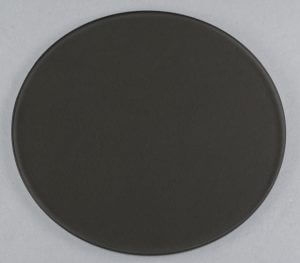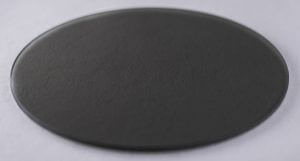A neutral density filter (ND filter) is a specialized optical filter that is designed to modify the intensity of all wavelengths of light by the same degree; typically reducing them by the same amount. A neutral density ND filter does not change color casts, and is used in a variety of photometric applications to restrict excess light which might make it difficult to read result. These filters are used photography chiefly to decrease the amount of light entering the camera. Neutral density filters are also used to split optical beams, to calibrate spectrophotometers ad film, and to check linear dynamic range.


Visually, a neutral density filter will appear to be clear or somewhat grey. It may be absorptive, fused- silica, or metallic on glass.
Decreasing the amount of light entering the camera with a neutral density filter allows photographers to achieve shallower depth of field and motion blur effects. For instance, a photographer might want to reduce depth of field in a series of photographs taken in bright daylight, or might want to decrease the visibility of moving objects in a landscape shot or blur the motion of water in a waterfall (motion blur). The long exposures required for these effects would result in overexposure under average to bright lighting conditions, but using a neutral density filter allows longer exposure and slow shutter speed without letting in too much bright light.
A special type of neutral density filter, the center neutral density filter, is used to balance exposure when using a wide angle lens. Graduated neutral density filters are another type of filter with a gradient of optical density from light to dark. These filters are especially useful when an image contains a bright background and a darker foreground; for instance, a landscape photograph taken at sunset.
The opacity of an optical filter is usually given in terms of optical density. For many photography applications, fractional transmittance may be required. This can be calculated as 10 -d , where d is optical density. Alternatively, it can be calculated as intensity after the filter divided by the incident intensity.
A filter with an optical density of 0.3 ND is equal to 1 stop of light reduction, and reduces the amount of light by ½. 0.6 ND is equal to 2 stops of light reduction, and reduces the amount of light by ¼. With each stop of a neutral density filter the amount of light entering the imaging device is halved. Thus a filter with 24 stops of light reduction has an optical density of 7.2 and a reduction of light equal to 1/16777216.
Neutral density filters can be stacked to produce higher optical densities and block more light. When filters are stacked, the transmittance of the final assembly is the product of the transmittance of the individual filters. The total optical density, on the other hand, is the sum of the optical densities of each of the filters in the stack.
It is important to note that neutral density filters should not be arranged with surfaces parallel, as that may cause internal surface reflections.
At Shanghai Optics we produce high quality neutral density for visible light as well as for ultraviolet and infrared applications. Our neutral density filter kit provides a set of filters with varying optical densities that can be used separately or in stacked configurations. Stepped optical filters, also known as stepped neutral density filters, are another option where imaging with a wide range of light transmission is required. They are designed to provide a discrete range of optical densities on a single filter. Request a free quote from S.O. online, or contact a representative to learn more about our capabilities.